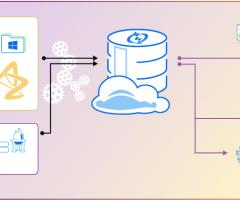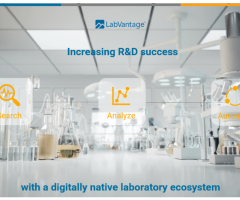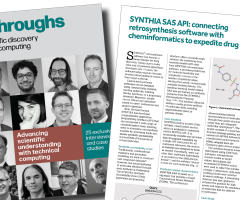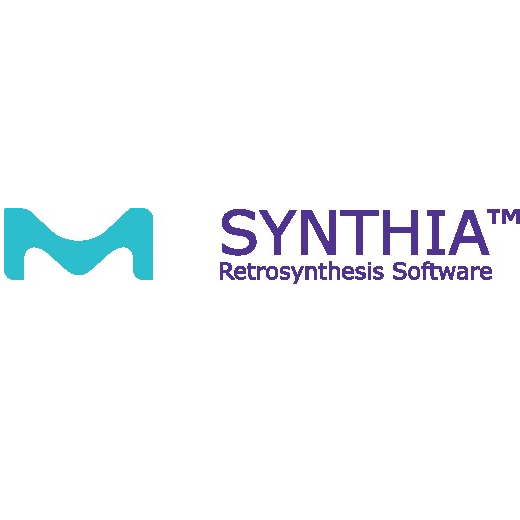
The power of scientific computing is changing our world. Breakthroughs is a unique collection of interviews with the thought leaders spearheading that innovation across five distinct areas. These inspiring stories – and the case studies they reveal – will help translate technical benefits into tangible results for engineers, scientists and researchers, and help leaders equip their teams with the best available computing tools.
Jump to...
Digital Laboratories
For more than two decades, Scientific Computing World has led the way in its content dedicated to the digital laboratory. This coverage has focused on LIMS and ELN systems and the deployment methods used for application-specific software and analysis tools, which increasingly include advanced analytics, machine learning and AI.
Many modern laboratory informatics software platforms provide a robust suite of solutions for instrument control, scientific data management, scientific search, network integration, and compliance management to streamline analytical laboratory operations. These solutions are used across a variety of industries, including pharmaceutical, environmental, food and beverage, chemical materials, and healthcare. This software supports scientists and helps laboratory-based organisations to reduce costs, accelerate decision-making, improve laboratory effectiveness, and get products to market faster.

Engineering markets
Engineering software has revolutionised how researchers in various fields approach complex problems, design solutions, and advance their understanding of complex physics. As technology continues to evolve, so does the indispensable role of software in engineering disciplines. This transformative impact extends across a multitude of domains, from aerospace and civil engineering to biomedical and environmental sciences, reshaping the landscape of research.
In the past, researchers relied heavily on manual calculations and physical prototypes, often constrained by the limitations of available resources and time. However, with the advent of sophisticated engineering software, these limitations have been removed. These powerful digital tools empower researchers to model, simulate, and analyse intricate systems and phenomena with unprecedented precision and efficiency. They offer a virtual sandbox where experiments can be conducted, modified, and repeated, accelerating the pace of discovery.
Engineering software enhances the sustainability and cost-effectiveness of research endeavours. By optimising designs, simulating various scenarios, and predicting outcomes, researchers can reduce waste, conserve resources, and streamline their projects, ultimately contributing to a more environmentally conscious and economically viable research landscape.
One of the remarkable effects of engineering software is its capacity to facilitate interdisciplinary collaboration. Researchers from different teams, departments or even organisations can harness the same software platforms to integrate their expertise and collectively tackle complex challenges. This cross-pollination of ideas fosters innovation and enables groundbreaking discoveries previously unattainable.
Artificial intelligence (AI) software
Artificial intelligence (AI) software is delivering a paradigm shift in how scientific research is conducted.
AI redefines the possibilities and potential for innovation across diverse domains. At its core, AI software leverages the power of machine learning, neural networks, and advanced algorithms to process vast data sets, uncover patterns, and generate insights at unparalleled speeds. Researchers now have a formidable ally in AI – one that can sift through mountains of information, identify subtle correlations, and assist in formulating hypotheses with exceptional accuracy. This data-driven approach allows scientists to explore uncharted territories – from genomics and materials science to climate modelling and drug discovery – with newfound confidence.
AI software is not just a tool for data analysis; it’s a catalyst for creativity and problem-solving. It can generate novel ideas, optimise experimental designs, and even simulate complex scenarios, providing invaluable guidance in research planning and execution. Moreover, AI fosters interdisciplinary collaboration by bridging gaps between fields and streamlining information exchange, leading to innovative cross-pollination of ideas.
As researchers delve deeper into the age of AI, its implications for researchers are staggering. It promises to unlock new frontiers in understanding our world, offering insights previously hidden in the vast expanse of data. This introduction merely scratches the surface of AI’s impact on research, inviting us to explore how AI reshapes the future of science and engineering research.
Quantum computing
Quantum offers perhaps the most significant change in how research is conducted since the advent of AI technology. Quantum is poised to disrupt the research landscape across disciplines and promises to unravel some of the most perplexing problems that have long eluded classical computing methods. As researchers grapple with increasingly complex and data-intensive challenges, quantum computing has emerged as a revolutionary tool, that will usher in a new era of computation and problem-solving.
One of the most transformative impacts of quantum computing on researchers is its ability to accelerate simulations and data analysis. Complex simulations can now be executed in a fraction of the time, allowing researchers to explore a broader range of scenarios and refine their models. This acceleration opens new avenues for scientific discovery and innovation. Researchers are now exploring quantum computing’s potential applications in cryptography, materials science, drug discovery, climate modelling, and optimisation problems.
However, it’s important to recognise that quantum computing is still in its infancy, with many technical challenges still to overcome. Researchers are actively working to develop robust quantum hardware and algorithms that can unleash the technology’s full potential.
In this exciting era of quantum computing, researchers stand on the cusp of transformative breakthroughs and paradigm shifts in how we understand and address complex problems.
High Performance Computing (HPC)
High-performance computing (HPC) is an indispensable tool that has revolutionised the research landscape across a wide variety of research domains, from weather and climate research to nuclear physics and drug discovery.
Researchers increasingly rely on HPC systems to tackle complex and computationally intensive problems once deemed insurmountable. HPC leverages advanced hardware architectures and parallel processing techniques to perform computations at speeds that far exceed the capabilities of conventional computing systems. These supercharged machines are capable of handling massive datasets, running intricate simulations, and executing complex algorithms with remarkable efficiency. As a result, researchers in fields ranging from astrophysics and genomics to climate modelling and aerospace engineering can explore phenomena, conduct experiments, and analyse data at unprecedented scales and resolutions.
HPC’s impact on researchers is multifaceted. Firstly, it expedites research by significantly reducing the time required for data analysis, simulation, and experimentation. What might have taken months or even years on traditional computing setups can now be accomplished in a matter of days or hours. This acceleration has also increased the pace of discovery and facilitates rapid iteration, fostering innovation.






































